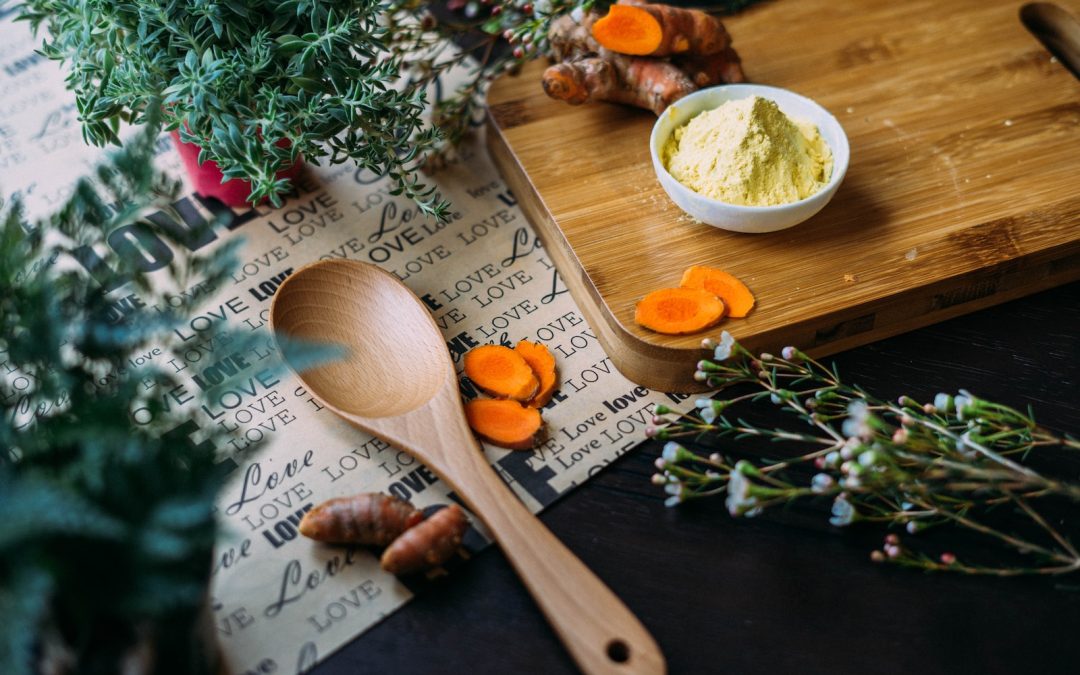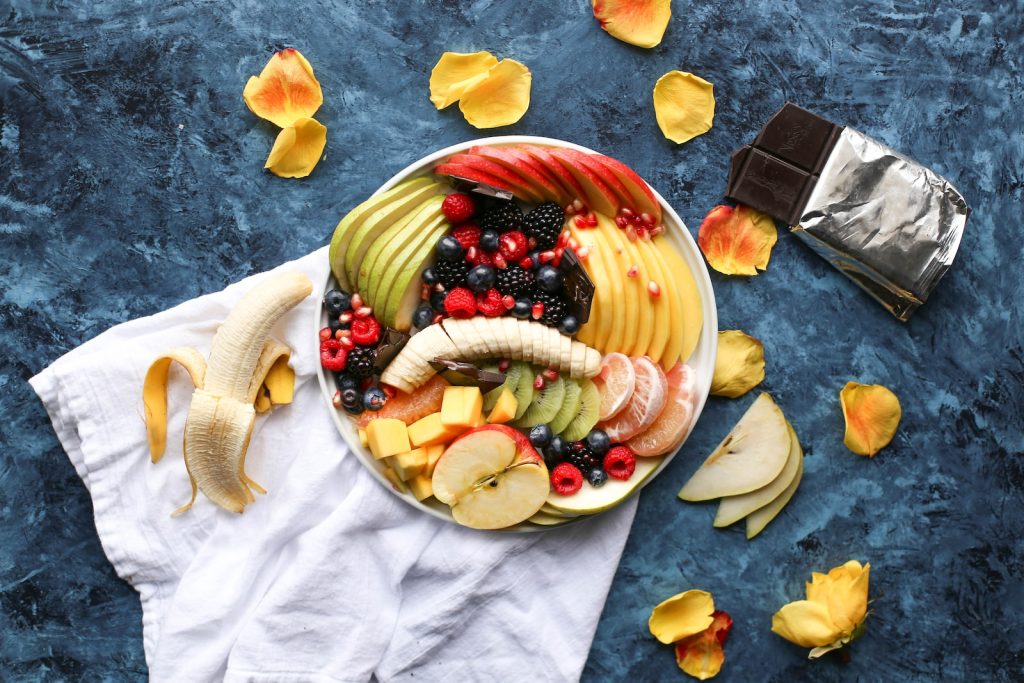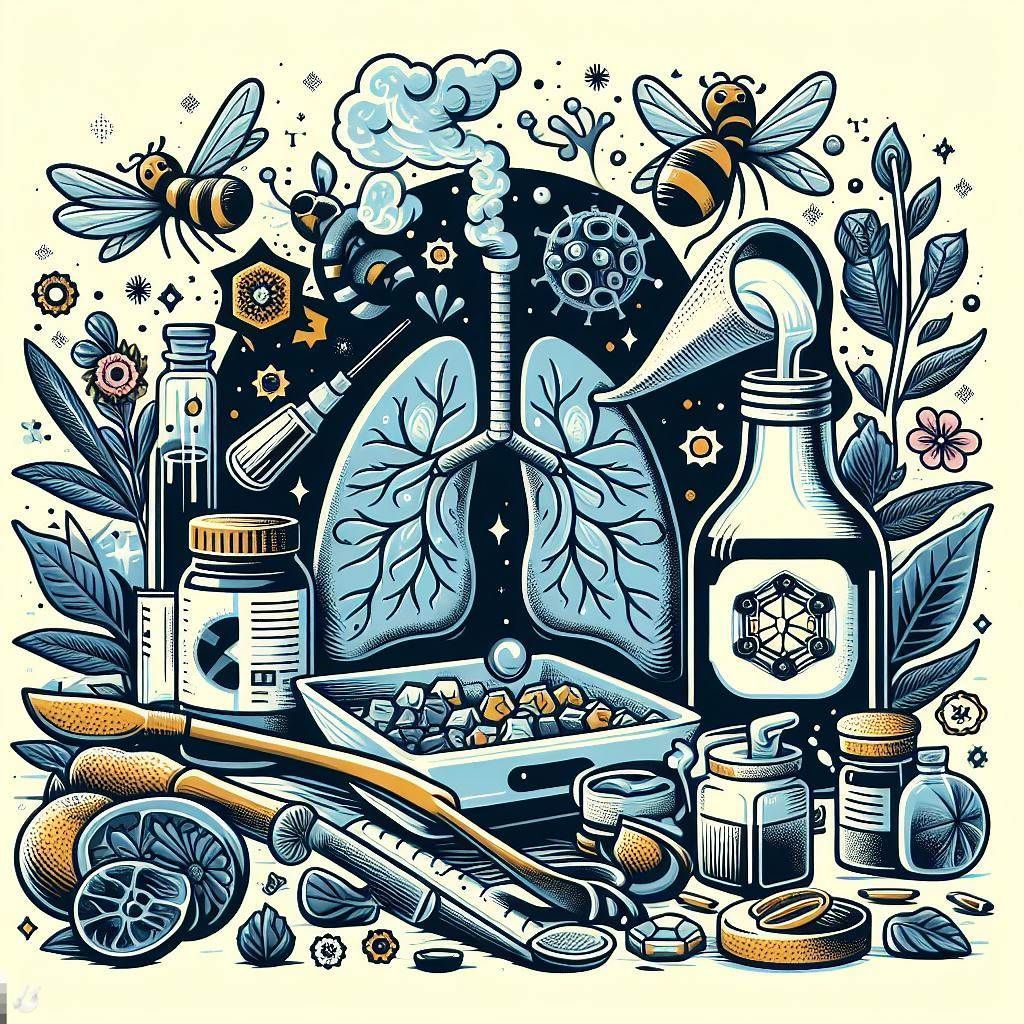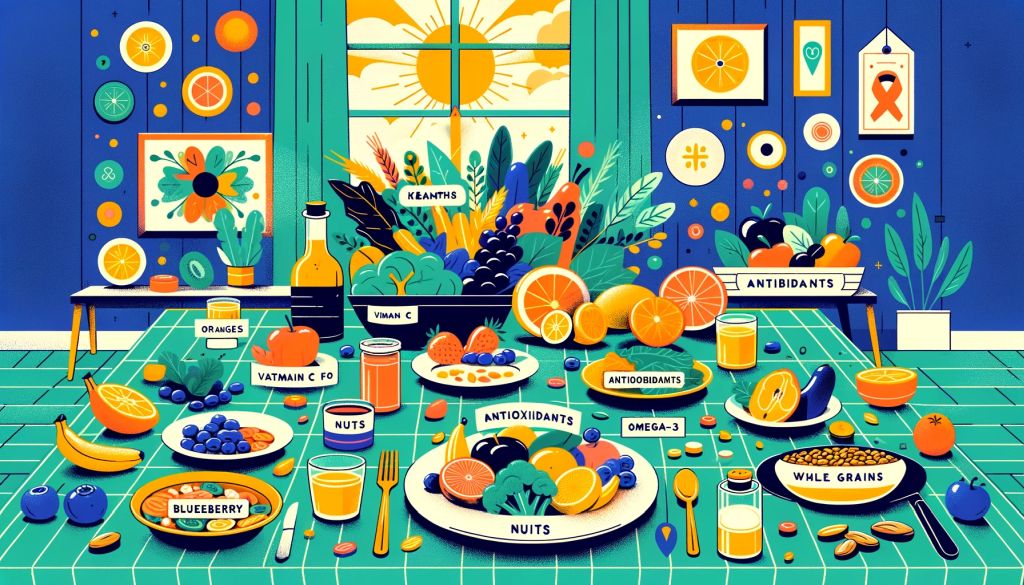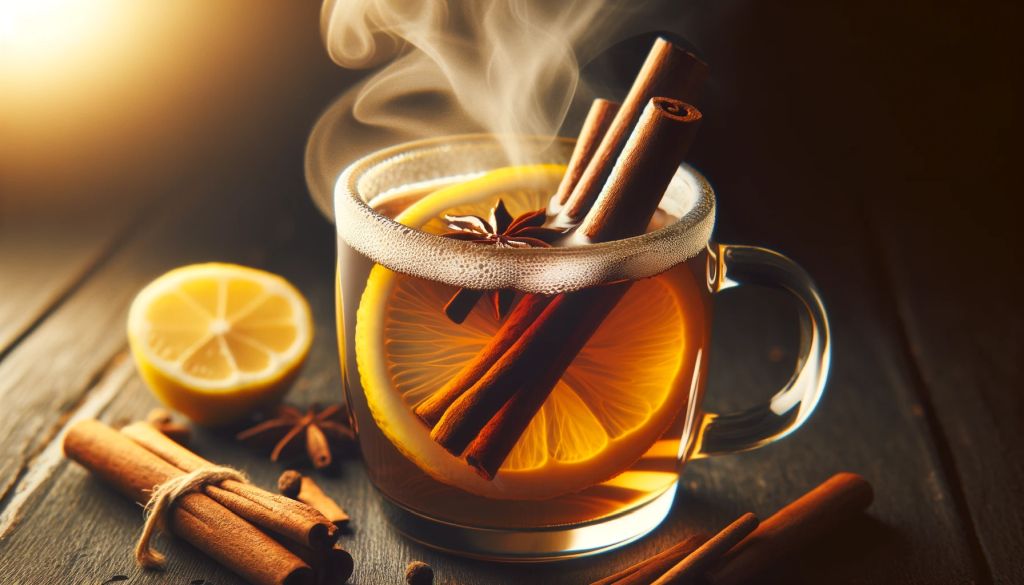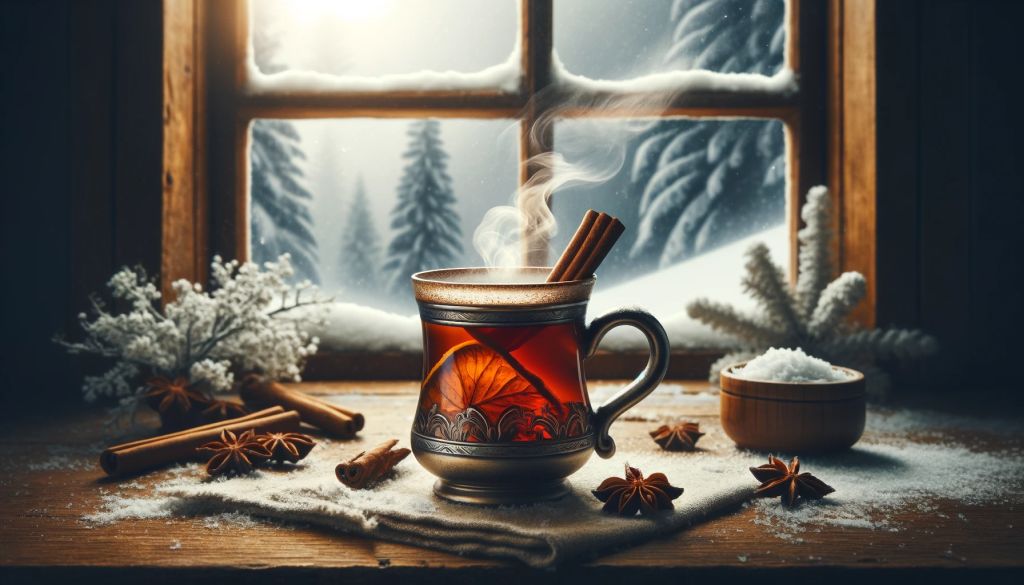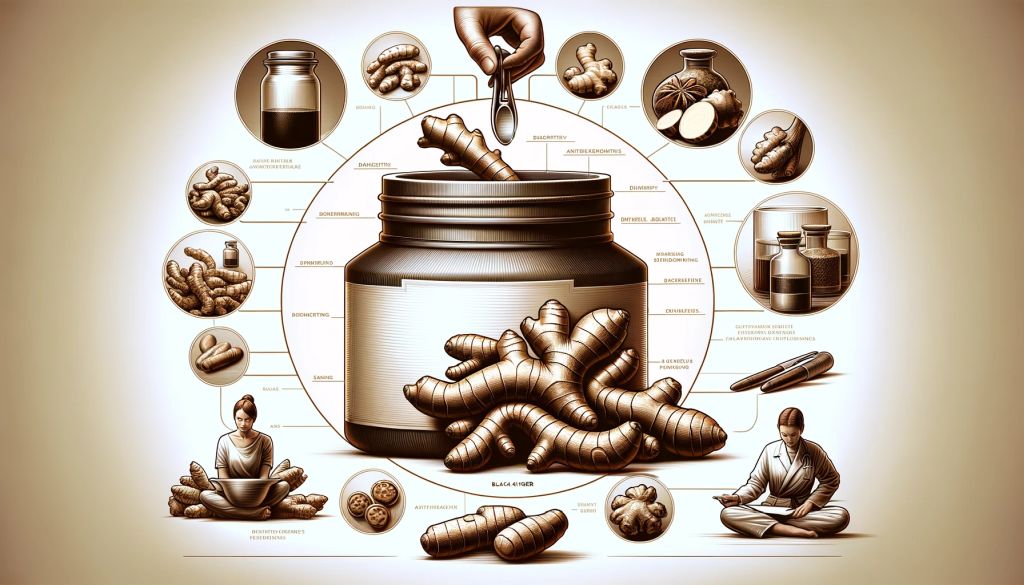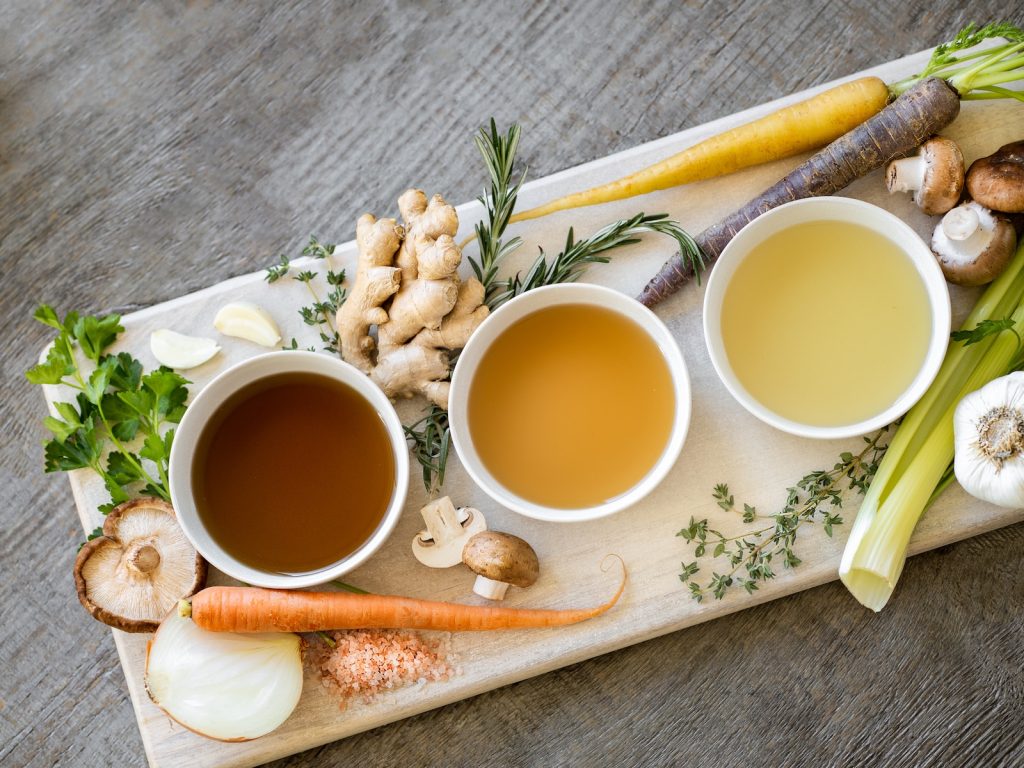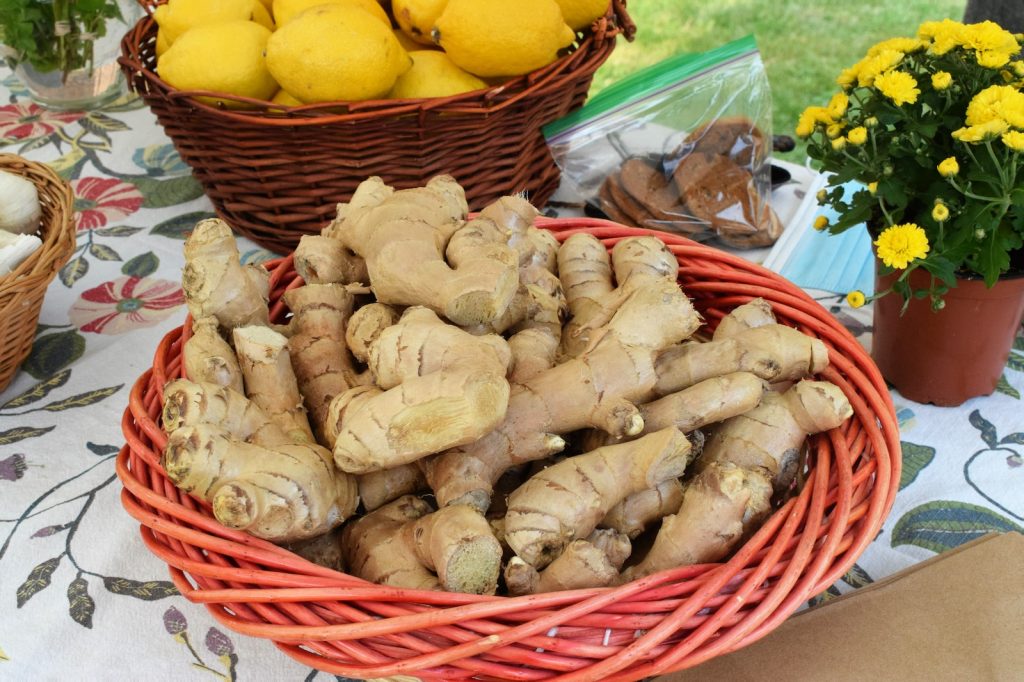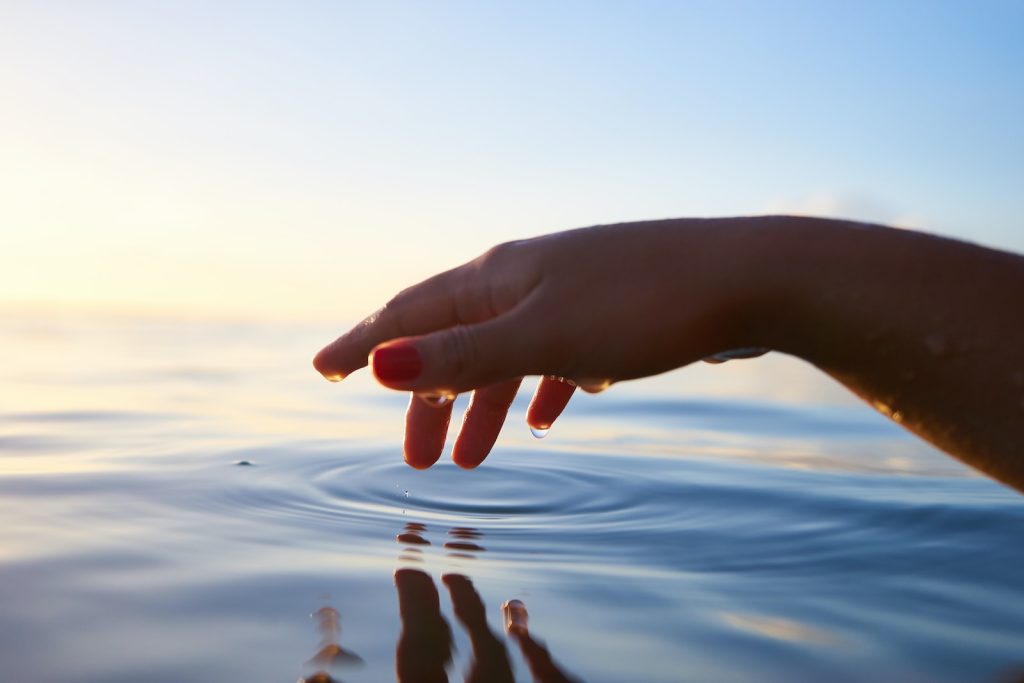
by Health And Healing AI | Jan 10, 2024 | Holistic Living
Graceful Aging Unlocked – Embracing Holistic Health in Your Later Years

Senior-woman-yoga-outdoors” – Black senior woman practicing yoga outdoors, exuding serenity.
Embrace Holistic Wellness to Thrive in Your Golden Years
Unlock the Art of Graceful Aging: Embracing the golden years of life is all about harnessing the wisdom of past experiences and focusing on holistic health to thrive. Good health and graceful aging are intertwined and shaped by the lifestyle choices you make every day. It’s about nurturing your body, mind, and spirit through practices that give you energy, happiness, and well-being.
As time goes on, paying attention to wellness becomes even more essential. Holistic wellness emphasizes the importance of a balanced lifestyle, ensuring that all facets of your health are cared for. It includes maintaining an active lifestyle, eating nutritious foods, staying connected with loved ones, and keeping your mind engaged. Caring for your overall wellness sets the stage for a vibrant and fulfilling life as you age.
Remember, aging is a natural process, but your age is mainly up to you. Making positive lifestyle decisions can help you maintain vitality and grace as the years advance. It’s never too late to adopt habits that can lead to a healthier, happier you, embracing the beauty each year brings.
Adopting a Wholesome Diet for Longevity
Unlock the Art of Graceful Aging: Adopting a wholesome diet centered around nutrition can be crucial to your health and longevity. Your focus should be on fresh fruits, vegetables, lean proteins, healthy fats, and whole grains to maximize the benefits of each meal.
Balancing Nutrition with Whole Foods
A balanced plate is integral to a healthy diet and should contain various whole foods. Imagine your plate divided into quarters:
- Fruits and vegetables should fill half the plate, providing a wide range of essential vitamins, minerals, and fiber. Aim for a colorful variety, like leafy greens, berries, and oranges, to get a spectrum of nutrients.
- Whole grains like quinoa, brown rice, and whole wheat bread should occupy one-quarter. These are excellent sources of fiber and other essential nutrients.
- The remaining quarter is for lean proteins such as chicken fish or plant-based options like lentils and beans.
Incorporating Lean Proteins and Healthy Fats
Proteins are the building blocks of life, vital to repairing tissues and maintaining muscle mass. Opt for lean proteins such as chicken breast, turkey, fish, or tofu to get the essential amino acids without excessive saturated fats.
Incorporate healthy fats from sources like:
- Avocados
- Nuts and seeds
- Olive oil
These support heart health and help you feel satisfied after meals.
Reducing Processed Foods and Sugar Intake
Reducing processed foods and refined sugars can have numerous health benefits. Processed items often contain unhealthy sodium levels, preservatives, and added sugars. Instead, satisfy your sweet tooth with natural sugars from fruits or small amounts of honey or maple syrup.
Remember, reading labels is vital — watch out for words like “high fructose corn syrup” and “hydrogenated oils,” and try to keep these out of your shopping cart.
Staying Active and Maintaining Mobility
ensures a vibrant quality of life as you age. It’s essential to focus on staying active and preserving your mobility. It will vastly improve your physical health and can enhance your flexibility.
Engaging in Regular Exercise and Physical Activity – Unlock the Art of Graceful Aging
Unlock the Art of Graceful Aging: Consistency is vital when it comes to exercise. Aim for at least 150 minutes of moderate-intensity activity each week, as recommended by health professionals. This consistency helps maintain your physical health and ensures your mobility remains at its peak. Activities like walking, swimming, or even gardening can all contribute positively.
- Walking: Aim for a brisk 30-minute walk five times a week.
- Swimming: Engage in 30 minutes of swimming for low-impact, high-resistance exercise.
- Gardening: Enjoy 45-60 minutes of gardening for movement and light strength training.
Exploring the Benefits of Yoga and Aerobic Exercise
Yoga and aerobic exercise are excellent for both your mind and body. Practicing yoga enhances your flexibility and balance, which are crucial for preventing falls. Aerobic exercises, on the other hand, strengthen your heart and boost endurance.
- Yoga: Integrate yoga into your routine 2-3 times weekly to improve flexibility and mental clarity.
- Aerobic Exercise: Incorporate activities like cycling or dance into your week for cardiovascular health.
Understanding Mobility Limitations and Adaptations
It’s normal to experience changes in mobility as you grow older. Identifying any mobility limitations you might face is essential to adapting your physical activities. Don’t hesitate to seek advice from healthcare professionals to tailor your exercise plan to your needs, ensuring you stay active within your capabilities.
- Consult Professionals: Regular check-ins with physical therapists can help adapt exercises to suit your mobility levels.
- Use Aids: Don’t shy away from using mobility aids such as canes or walkers if they help you stay active safely.
Remember, every bit of movement counts towards sustaining your mobility and independence. Make activity a joyful part of your day-to-day life, and take pride in taking steps to maintain your well-being.
Fostering Mental and Emotional Well-Being
Your golden years can be a period of profound mental and emotional fulfillment. Focusing on stress management and cultivating a positive mental state are critical components of thriving. Explore specific practices to enhance your emotional well-being and strengthen cognitive functions.
Practices for Reducing Stress and Anxiety
Reducing stress and anxiety isn’t just about feeling better temporarily; it’s about creating a sustainable, peaceful mindset. Begin by identifying activities that calm you, such as gardening or listening to music. Equally important are relaxation techniques like deep-breathing exercises and yoga, which you can integrate into your daily routine to maintain a serene mental environment.
Cultivating a Positive Attitude and Mental State
A positive attitude is pivotal to your overall happiness and mental health. Start your day by listing three things you’re thankful for, creating an atmosphere of gratitude. Also, engage in social activities that bring joy and affirm your sense of community and belonging, which is essential for robust emotional well-being.
Meditation and Mindfulness for Cognitive Function
Regular meditation and mindfulness practices benefit your brain’s health, aiding in maintaining and improving cognitive function. Set aside a quiet space for daily meditation, focusing on the present moment. It can help clear your mind and reduce mental clutter, enhancing clarity and concentration.
Enhancing Social Connections and Community Involvement

Active-elderly-outdoor-adventure” – Elderly individuals actively hiking in a lush natural landscape, embodying the spirit of adventure.
As you navigate through your golden years, engaging in your community and forging strong social connections can immensely contribute to your well-being. Let’s look at specific ways to enrich these areas of your life.
Building and Maintaining Healthy Relationships
nourish healthy relationships, it’s vital to reach out and stay proactive. Consider joining community-based group physical activities that enhance your physical health and provide a platform to meet new people. Initiatives such as intergenerational programs can connect you with younger generations, enriching your social network with diverse perspectives.
The Importance of Friendships and Family Ties
Friendships and family ties form the cornerstone of your social ecosystem. Regularly schedule time for catching up or sharing activities with friends to maintain these bonds. When it comes to family, make the most of technology to keep in touch, especially if you’re geographically apart. Remember, a phone call, video chat, or text message can strengthen your social connections immensely.
Participating in Clubs and Volunteer Opportunities
Volunteer opportunities are an excellent way to keep social and give back. Choose a cause dear to your heart, and you’ll find that contributing time can lead to fulfillment and new friendships. Meanwhile, clubs and hobby groups cater to diverse interests, be it books, gardening, or other pursuits, allowing for social interaction with like-minded individuals. You can find volunteer options via resources such as spectrumhealthcare.com, highlighting the importance of belonging and community involvement.
Safeguarding Physical Health with Preventive Care

Get the blueprint to age with confidence and joy. Essential tips for embracing wellness and beauty at any age. Photo by Brenda Godinez
Unlock the Art of Graceful Aging: Approaching your golden years with a proactive mindset can vastly improve longevity and vitality. Emphasizing preventive care through regular visits to healthcare providers, managing risks for chronic diseases, and ensuring adequate rest significantly contributes to aging with strength and wellness.
Routine Healthcare Provider Visits and Screenings
Visiting your healthcare provider routinely for check-ups and screenings is crucial. These visits allow you to monitor vital health metrics like blood pressure and cholesterol levels, critical in assessing your risk for heart disease and stroke. It’s also a chance to discuss skin health and schedule skin cancer screenings, as early skin cancer detection increases the chances of successful treatment. Moreover, these screenings can include bone density tests to counteract muscle loss and prevent osteoporosis.
Preventing Chronic Diseases and Health Complications
Your dietary choices, physical activity, and lifestyle habits directly impact preventing chronic diseases such as heart disease, cancer, and diabetes. To fend off these conditions:
- Eat a balanced diet rich in fruits, vegetables, and whole grains.
- Stay active with regular exercise that suits your level of mobility and strength.
- Avoid tobacco use and limit alcohol intake.
Addressing these factors early on can reduce complications and improve your quality of life.
Importance of Sleep and Rest in Disease Prevention
Sleep plays a pivotal role in maintaining health and preventing diseases. Ensure you sleep 7-9 hours each night to help repair and maintain crucial body functions. Lack of sleep can weaken your immune system and increase the risk of health problems. Create a restful environment and a consistent bedtime routine to optimize your sleep quality, which can also slow the progression of muscle loss and support overall bone health.
Practicing Healthy Lifestyle Routines and Habits

Energetic-elderly-gardener-flowers” – An energetic elderly woman tending joyfully to her vibrant flower garden.
Unlock the Art of Graceful Aging: Adopting a consistent, healthy lifestyle can be incredibly beneficial as you age. Smart choices in skin care, engaging in activities, and establishing regular routines can lead to vibrant and fulfilling golden years.
Skin Care and Protection from Sun Damage
Your skin acts as a vital barrier against environmental elements. Daily use of sunscreen can help prevent sun damage, while moisturizers support skin hydration. Incorporate broad-spectrum SPF into your routine and wear protective clothing when out in nature to help with anti-aging and reduce cellular damage.
Engaging in Hobbies and New Experiences
Stimulating your mind with hobbies or pursuing new experiences is vital to an engaging lifestyle. Whether gardening, painting, or learning a musical instrument, these activities can enhance cognitive function and emotional health. Similarly, trying new things encourages personal growth and keeps life exciting.
The Role of Routine and Consistency in Aging
- Daily Exercise: Integrating at least 150 minutes of moderate-intensity aerobic exercise per week, such as walking or swimming, and muscle-strengthening activities can significantly benefit your physical health.
- Consistent Sleep: Aim for 7-9 hours of sleep nightly. Regular sleep aids memory, mood regulation, and overall health.
- Healthy Eating: Nutrient-rich foods like fruits, vegetables, and lean proteins should be staples in your diet. Small, habitual changes contribute significantly to long-term wellness.
Remember, these lifestyle factors play a pivotal role in graceful aging. Maintaining healthy routines and habits is essential to thriving as you grow older.
Embracing an Optimistic Spirit and Resilience

o Seniors showing harmony and balance in aging through outdoor Tai Chi class.
Stepping into your golden years with resilience and an optimistic spirit can significantly influence your journey through aging.
Let’s explore practical steps towards adopting a vitality-filled attitude, laughing in the face of wrinkles, and overcoming challenges to find profound self-worth and purpose.
Cultivating Gratitude and Humor in Everyday Life
Gratitude can deeply enrich your life, influencing your mood and overall well-being. Start by keeping a gratitude journal, noting even the smallest joys of your day.
Embrace humor by seeking out laughter; it’s a natural antidote to stress and can soften the appearance of wrinkles. According to the Art of Aging Gracefully: Embracing and Thriving in Your Golden Years, humor and a positive outlook on life are essential to aging with grace.
Overcoming Physical and Emotional Challenges
Aging brings physical challenges, but your response to these changes defines your resilience.
Regular exercise tailored to your abilities can boost your energy levels and help maintain vitality. Address emotional hurdles through practices like mindfulness or by seeking supportive communities.
Resilience isn’t just genetic; it is built through consistent efforts to manage life’s hurdles with a positive attitude.
The power of positive thinking is shown to promote better mental well-being, even as you navigate the complexities of aging.
Finding a Sense of Purpose and Fulfillment
Your sense of purpose fuels your drive and contributes to a strong sense of self-worth, which can be vital in combating ageism. Engaging in activities that align with your interests and values can lead to significant fulfillment.
Open to new experiences or rekindling past passions – they can offer fresh energy and perspective.
Remember, your unique life experience shapes your wisdom and resilience, as highlighted by resources such as Thriving in the Golden Years: How to Accept Aging Gracefully, which stresses the importance of an optimistic spirit in finding fulfillment in aging.
Frequently Asked Questions

Group of seniors laughing together at a community center, showcasing social connections in graceful aging.
Unlock the Art of Graceful Aging: Navigating the golden years can be a fulfilling experience when you integrate beneficial habits into your daily routine. In this section, you’ll find answers to some of the most frequently asked questions about maintaining vitality and health as you age.
What are effective daily habits that promote aging with vitality and health?
Daily habits like staying active, engaging in mental stimulation, and getting quality sleep can significantly contribute to your vitality and health. Regular movement and cognitive exercises keep both your body and mind sharp.
Can regular exercise influence the quality of life as one gets older?
Exercise is pivotal in enhancing your quality of life by improving mobility, mood, and mental clarity. Brisk walking, yoga, or swimming can help maintain physical fitness and overall well-being.
How does nutrition impact aging, and what diet promotes wellness in later years?
A balanced diet, rich in fruits, vegetables, whole grains, and lean proteins, can profoundly impact aging. Eating foods high in antioxidants and healthy fats supports cognitive function and can help prevent chronic diseases.
What role does mental health play in staying youthful and energetic during retirement?
Mental health is as important as physical health in keeping you youthful and energetic. Activities that promote mental wellness, such as meditation, socializing, and hobbies, can enhance your mood and mental agility.
How can social connections and community involvement benefit seniors?
Strong social connections and community involvement provide emotional support and can lead to a longer, happier life. Participating in community events and building relationships combat isolation and promote a sense of belonging and purpose.
What are some natural strategies for managing common age-related health issues?
Natural strategies like a nutrient-dense diet, stress management techniques, and regular physical check-ups can effectively manage age-related health issues. Herbs and supplements may also support health, but it’s essential to consult with a healthcare provider before starting any new regimen.
Conclusion

Redefine Your Golden Years – Age Gracefully with the Power of Holistic Wellness.
Unlock the Art of Graceful Aging: Embracing your golden years with positivity and well-being means making intentional choices that benefit your entire self. You can prioritize self-care and nurture strong connections with loved ones to create a foundation of emotional strength.
- Stay physically active with regular exercise.
- Stimulate your mind with engaging activities.
- Maintain social bonds to enrich your life.
Incorporate a holistic approach to wellness to ensure that your lifestyle choices contribute to aging vibrantly. Doing so can fill your golden years with joy and purpose.
Remember, aging is a natural process, and it’s entirely within your power to make it a graceful journey. Thrive by staying active, eating well, and fostering fulfilling relationships. Your later years can be some of the richest in life, offering opportunities for growth, learning, and happiness.
Embrace the art of living well at any age.
Wrap-Up
“Unlock the Art of Graceful Aging” is a comprehensive guide that delves into the multifaceted approach to aging with elegance and vitality.
This insightful post sheds light on the art of growing older gracefully and with a sense of fulfillment and joy.
It emphasizes the importance of holistic wellness, underscoring the interconnectedness of physical health, mental well-being, and emotional balance in aging.
The blog explores various dimensions of holistic wellness, including nutritious diets, regular physical activity, mental exercises, and social engagement, all of which gracefully play a pivotal role in aging.
It highlights how a balanced diet rich in nutrients can combat age-related decline while physical activities keep the body strong and agile.
Mental exercises like puzzles, reading, and creative hobbies are shown to sharpen the mind, and maintaining social connections is portrayed as crucial to emotional health.
The post also touches on the psychological aspects of aging, offering strategies to embrace changes with positivity and resilience.
Overall, “Unlock the Art of Graceful Aging” is an empowering roadmap for anyone looking to navigate their golden years with confidence and grace.
Call to Action
“Are you ready to embrace a journey of wellness and joy in your golden years? Dive into the enriching world of graceful aging with us. ‘Unlock the Art of Graceful Aging,’ and start your transformative journey today. Your path to a vibrant, fulfilling senior life!”
P. S. Remember, aging isn’t just about adding years to your life, but also life to your years. Don’t miss out on this opportunity to redefine your golden years!”

by Health And Healing AI | Jan 6, 2024 | Natural Remedies
Discover quick and effective ways to manage your cough, ensuring your day remains productive and comfortable.

A serene winter landscape with snow-covered trees and mountains in the background.
The Surprising Impact of Daily Habits on Your Cough
Elizabeth Redd is the news curator for Health and Healing AI. Today, I want to share an article that I found very helpful and informative.
It’s from Health News and about the best home remedies to treat your cough naturally.
I don’t know about you, but I hate having a cough. It’s annoying, uncomfortable, and sometimes embarrassing.
That’s why I was so glad to discover this article, which offers some easy and effective ways to soothe your throat and lungs with natural ingredients.
You’ll learn how to use honey, ginger, lemon, garlic, and more to make your cough remedies at home.
Trust me, you’ll be amazed by how much better you’ll feel after trying these tips.
Main Points

Patient-listen-to-doctor-on-cough-relief-advice.
What causes a cough and when to see a doctor
- A cough is a natural reflex that helps clear the airways of mucus, irritants, or infections.
- A cough can be acute (lasting less than three weeks) or chronic (lasting more than eight weeks).
- Various factors, such as allergies, asthma, bronchitis, pneumonia, smoking, or COVID-19, can cause a cough.
- A cough can be dry (without mucus) or productive (with mucus).
- Other symptoms, such as fever, sore throat, chest pain, or shortness of breath, can accompany a cough.
- A cough can be treated with over-the-counter or prescription medications, depending on the cause and severity.
- A cough can also be relieved with natural remedies, which are the focus of this article.
- A cough that is persistent, severe, or has blood or green or yellow mucus should checked by a doctor.
The best home remedies to treat your cough naturally
- The article lists 12 natural remedies to help soothe your cough and boost your immune system. They are:
- Honey: A natural antibacterial and anti-inflammatory agent that can coat the throat and reduce coughing. Mix with warm water, lemon, ginger, or cinnamon.
- Ginger: A natural anti-inflammatory and antiviral agent that can ease a dry or asthmatic cough. Add it to tea, honey, hot water, or chewed raw.
- Lemon is A natural source of vitamin C and antioxidants that fight infections and reduce inflammation. Squeeze lemons into warm water, honey, or tea, or use them as a gargle.
- Garlic is a natural antibiotic and antifungal agent that kills bacteria and fungi that cause coughs. It can be eaten raw, cooked, or added to honey or tea.
- Turmeric: A natural anti-inflammatory and antiseptic agent that can heal the throat and lungs. Mix it with milk, honey, or water, or use it as a gargle.
- Saltwater: This natural disinfectant and decongestant can clear the mucus and soothe the throat. It can be used as a gargle several times a day.
- Steam: A natural way to moisten the airways and loosen the mucus. It can be inhaled from a bowl of hot water, a shower, or a humidifier, with or without adding essential oils, such as eucalyptus, peppermint, or lavender.
- Thyme: A natural expectorant and antispasmodic agent that can help expel the mucus and relax the muscles of the respiratory tract. It can be brewed into tea, added to honey, or used as a gargle.
- Licorice root Is a natural demulcent and anti-inflammatory agent that can coat the throat and reduce irritation. It can be brewed into tea, chewed, or taken as a supplement.
- Marshmallow root is a natural mucilage and anti-inflammatory agent that soothes the throat and eases the cough. It can be brewed into tea, taken as a syrup, or used as a tablet.
- Slippery elm is a natural mucilage and antioxidant agent that protects the throat and reduces inflammation. It can be brewed into tea, taken as a syrup, or used as a tablet.
- Pineapple: A natural source of bromelain, an enzyme that can break down the mucus and reduce coughing. Eat fresh, juiced, or taken as a supplement.
The precautions and tips to use home remedies safely and effectively
- The article advises you to consult a doctor before using any home remedies, especially if you have a chronic condition, are pregnant or breastfeeding, or are taking any medications.
- The article warns to avoid giving honey to children under one year of age, as it can cause botulism, a rare but severe form of food poisoning.
- The article suggests testing the home remedies on a small skin area first to check for allergic reactions, such as rash, itching, or swelling.
- The article recommends using organic, raw, unfiltered honey, ginger, lemon, garlic, turmeric, and pineapple, as they have more nutrients and fewer additives than processed ones.
- The article advises plenty of fluids, such as water, herbal teas, soups, or broths, to stay hydrated and thin the mucus.
- The article encourages avoiding or limiting the intake of caffeine, alcohol, dairy products, and sugar, as they can dehydrate, irritate, or thicken the mucus.
- The article reminds us to practice good hygiene, such as washing our hands, covering our mouth and nose when coughing or sneezing, and disposing of used tissues to prevent the spread of germs.
- The article urges you to get enough rest, sleep, and relaxation to help your body heal and recover.
My Biggest Takeaway

Unveiling the Lesser-Known Causes of Persistent Coughing.
The biggest takeaway from this article is that you don’t have to suffer from a cough or rely on expensive or harmful medications.
You can use natural remedies that are readily available, affordable, and effective to treat your cough and improve your health.
These remedies are not only good for your cough but also for your immune system, your digestion, your skin, and your mood.
They are simple, safe, and satisfying to use. So, the next time you cough, don’t hesitate to try these home remedies and see the difference for yourself. You’ll be glad you did.
Alright, here is what I wrote:
Related Articles From Around The Internet

Nutritious-meal-displaying-antioxidants-and-omega-3.
You can check out these articles from different sources to learn more about natural cough remedies.
They offer more tips, insights, and evidence on how to treat your cough naturally and effectively.
This article reviews 12 natural remedies for cough, such as honey, ginger, lemon, garlic, turmeric, salt water, steam, thyme, licorice root, marshmallow root, slippery elm, and pineapple.
It also explains what causes a cough, when to see a doctor, and how to prevent it.
This article provides some home hacks to get rid of a bad cough, such as drinking lots of fluids, swallowing some honey, looking to nature, sipping a hot drink, clearing irritants from your home, sleeping on an incline, and gargling saltwater.
It also tells you the underlying causes of a cough and when to seek medical help.
This article lists 14 natural cough remedies that you can try at home, such as drinking tea with lemon and honey, gargling saltwater, consuming thyme, using an air purifier or humidifier, taking supplements like zinc and vitamin C, applying a warm compress, and eating spicy foods.
It also gives you some advice on how to prevent a cough and when to see a doctor.
This article explores 12 home remedies for cough relief, such as ginger, marshmallow root, peppermint, eucalyptus, honey, lemon, chamomile, anise, ivy leaf, mullein, bromelain, and N-acetylcysteine.
It also discusses the scientific research behind these remedies, their possible side effects, and their interactions with medications.
This article shows some natural cough remedies in a slideshow format, such as honey, ginger, hot fluids, steam, salt water, thyme, licorice root, marshmallow root, slippery elm, pineapple, herbs, and cough drops.
It also explains how these remedies work and how to use them safely and effectively.
Related Books About Home Remedies for Cough You May Be Interested In

Revolutionizing Your Day – Lifestyle Changes to Minimize Coughing. Photo by Vlada Karpovich
Cough Cures: The Complete Guide to the Best Natural Remedies and Over-the-Counter Drugs for Acute and Chronic Coughs
This book bridges the gap between conventional and holistic medicine and offers natural alternatives for antibiotics, cough syrups, pain and sleeping medications, and antacids.
It also guides the best over-the-counter drugs for different types of coughs. Check this book out on Amazon.
Cough No More: Natural Cough Remedies for Adults to Soothe and Heal
This book contains natural cough remedies for adults that can help soothe and heal the throat and lungs.
It also explains the causes and types of coughs, the benefits and risks of conventional and alternative treatments, and the prevention and management of coughs. Check this book out on Amazon.
Home Remedies for Cough Relief – The Old Farmer’s Almanac
This book is a collection of natural home remedies for cough relief from The Old Farmer’s Almanac.
It includes tips and recipes for using honey, ginger, lemon, garlic, turmeric, salt water, steam, thyme, licorice root, marshmallow root, slippery elm, and pineapple. Check this book out on Amazon.
This book is a curated list of eight books on natural remedies that have stood the test of time. It covers herbal medicine, aromatherapy, homeopathy, Ayurveda, Chinese medicine, and more.
It also features reviews and recommendations from experts and readers. Check this book out on Amazon.
17 Natural Remedies for Cough, Lung Infections and Bronchitis
This book is a comprehensive guide to natural cough, lung infections, and bronchitis remedies. It covers the causes, symptoms, and complications of these conditions and the best foods, herbs, supplements, and lifestyle changes to treat them.
It also includes recipes and instructions for making your cough remedies at home. Check this book out on Amazon.
This website participates in the Amazon Services LLC Associates Program, an affiliate advertising program designed to provide a means for sites to earn advertising fees by advertising and linking to Amazon.com and affiliated sites. As an Amazon Associate,
I earn from qualifying purchases.
Wrap-UP

Cough Relief: Discovering Quick Fixes for Sudden Outbreaks.
“Don’t Let a Cough Ruin Your Day” is a comprehensive guide dedicated to helping individuals manage and alleviate cough symptoms, ensuring their daily routine remains unaffected.
The main point of this resource is to provide readers with practical advice, home remedies, and professional insights, empowering them to tackle coughs effectively and maintain their productivity and comfort throughout the day.
The article begins by exploring the common causes of coughs, from environmental triggers to underlying health issues, offering a deeper understanding of why coughs occur.
It then delves into various solutions, from over-the-counter medications and natural remedies to lifestyle changes and preventive measures.
Highlights include tips on strengthening the immune system, the benefits of hydration and a balanced diet, and the importance of maintaining good air quality in living spaces.
Additionally, the piece features advice from healthcare professionals, ensuring that the information is practical and medically sound.
The goal is to provide readers with a holistic approach to managing their cough, thereby minimizing its impact on their day-to-day lives.
Call to Action:
“Don’t let your cough overshadow another day. Take charge now! Embrace a healthier, more comfortable life starting today!”
P. S. Still curious about more ways to keep your cough in check? Dive deeper into our extensive resources and expert advice. Discover the secrets to a cough-free life – because you deserve to enjoy every day to its fullest!”

by Health And Healing AI | Jan 5, 2024 | Wellness
Hot Toddy: A Delicious Drink That Can Cure Your Winter Blues

Comforting hot toddy with visible steam, cinnamon, and lemon in a transparent mug.
I’m Elizabeth Redd, the news curator for Health and Healing AI. Today,
I want to share an article from HealthNews that explores hot toddy, a traditional drink many people swear by for cold and flu relief.
Is there any truth to this claim, or is it just a cozy placebo?
The article dives into the science behind hot toddy ingredients, such as honey, lemon, spices, and alcohol, and how they may affect your immune system and symptoms.
You’ll also learn about the history and variations of this soothing concoction and how to make your own at home.
I liked this article because it was informative, engaging, and balanced.
It didn’t make any exaggerated claims or promises, but it didn’t dismiss the potential benefits of a hot toddy.
It gave me a new perspective on this drink and some tips on how to customize it to my liking.
If you’re feeling under the weather or want to warm up on a chilly day, I recommend you check out this article and try a hot toddy for yourself.
You might be surprised by how good it makes you feel. Cheers!
Main Points

Content woman in a snug blanket holding a steaming mug of hot toddy on a cold evening.
What is a Hot Toddy?
- A hot toddy is a drink made with hot water, honey, lemon, spices, and alcohol, usually whiskey, brandy, or rum.
- It is a traditional remedy for colds and flu, especially in the UK, Ireland, and the US.
- It is also a popular winter drink that can warm and relax you.
How does a Hot Toddy work for Colds and Flu?
- A hot toddy may have some benefits for colds and flu, but it is not a cure or a substitute for medical treatment.
- The ingredients of a hot toddy may have some effects on your immune system and symptoms, such as:
- Honey: It can soothe a sore throat, suppress a cough, and act as an antioxidant and anti-inflammatory agent.
- Lemon can provide vitamin C, which may boost immunity and reduce inflammation.
- Spices: They can add flavor and aroma, and some of them, such as ginger, cinnamon, and cloves, may have anti-inflammatory, antiviral, and antibacterial properties.
- Alcohol: It can help you relax and fall asleep, which may improve your recovery. However, it can also dehydrate you, impair your immune system, and interact with some medications. Therefore, you should drink moderately and consult your doctor before drinking alcohol if you are taking any drugs.
- A hot toddy may also work as a placebo, meaning it can make you feel better because you believe it will.
What is the history and variation of a hot toddler?

Warm hot toddy in an Irish mug, offering comfort beside a frosty winter window.
The origin of the hot toddy is unclear, but some possible sources are:
- The name may come from the Hindi word “daddy,” meaning a drink made from palm sap.
- The drink may have been introduced to Britain by the East India Company in the 17th century.
- The drink may have been inspired by a Scottish physician named Robert Bentley Todd, who prescribed a hot drink of brandy, canella, sugar, and water to his patients in the 19th century>
The hot toddy has many variations around the world, such as:
My Biggest Takeaway

A lady is enjoying a warm hot toddy in the cold with a serene snow-covered backdrop.
The biggest takeaway from this article is that a hot toddy is more than a drink. It is a cultural tradition, a natural remedy, and a personal preference.
It may not cure your cold or flu, but it can make you feel better in many ways.
Whether you drink it for its health benefits, taste, or comfort, a hot toddy is a drink you can enjoy and customize.
So, the next time you feel a sniffle or a chill, why not try? You might discover a new favorite drink that keeps you warm and cozy all winter. 🍵
Related Articles From Around The Internet
If you want to learn more about the hot toddy and its effects on colds and flu, you can check out these articles from different sources:
This Hot Toddy Recipe for a Cold Might Be Doctor-Approved1
This article from Taste of Home explains the ingredients and benefits of a classic hot toddy recipe and how it can help you relax and sleep better when you have a cold or flu.
It also gives some tips on customizing your hot toddy with different spices and sweeteners.
Can a hot totty help a cold? Evidence, recipe, and alternatives2
This article from Medical News Today examines the evidence and limitations of using a hot toddy for a cold.
It also provides a simple recipe and some alternatives for people who want to avoid alcohol or honey.
Do hot toddies have medicinal properties? Yes, but alcohol isn’t one3
This article from USA Today interviews experts from the cocktail and medical fields who share their opinions and insights on the hot toddy.
It also discusses the history and variations of the drink and how to enjoy it responsibly.
Here are some related books about hot toddy for cold and flu that you may be interested in:
Related Books About Hot Toddy for Cold and Flu You May Be Interested In

A Sip of Mystery – Uncovering the Lesser-Known Benefits of Hot Toddies. Photo by Alexandra Fuller
The Hot Toddy Book: 50 Recipes to Cure What Ails You
This book by Mr.Sebastian An Gaina Riggsen has 50 recipes for hot toddies; from classic Made with honey, lemon juice, and hot tea, this classic whiskey cocktail is cozy, warming, and bright.
It also includes some history and trivia about the drink and tips on making the hot toddy. Learn about hot toddy! This classic whiskey cocktail is cozy, warm, and bright, made with honey, lemon juice, and hot tea. Check this book out on Amazon.
Hot Toddy Recipes for Cold Relief
The Hot Toddy Recipe Book: 21 Irresistible Hot Toddy Recipes to Warm Your Body and Soul
This book by Alain Duke When the temperature drops, nothing is better than a mug of freshly prepared hot toddy.
The finely curated ingredients bring warmth and comfort, improving a cold day. This drink is well known for its power to warm your soul and comfort you during sick days.
The blend of warmth and spiciness soothes a sore throat and relieves congestion. Check this book out on Amazon.
Hot Toddies: Mulled Wine, Buttered Rum, Spiced Cider, and Other Soul-Warming Winter Drinks
This book by Christopher O’Hara and William A. Nash Hot Toddies: Mulled Wine, Buttered Rum, Spiced Cider, and Other Soul-Warming Winter Drinks.
What could be more delightful than a hot toddy when the weather outside is frightful?
From the scent of nutmeg-laced hot buttered rum to the fizz of a poinsettia cocktail, there’s nothing like a classic winter drink to bring true festivity to the season.
And it’s as easy as pie—whipping eggnog from scratch is much simpler than cooking the perfect turkey, and your guests will appreciate the gesture. Check this book out on Amazon.
The Healing Powers of Tea: A Complete Guide to Nature’s Special Remedy
Wellness in a Cup—Discover the Benefits of Tea for Your Body and Mind!
This book by Cal Orey is a complete guide to the healing powers of tea, a natural remedy that can help with colds, flu, and many other ailments.
It picks you up, calms you down, and refreshes you.
With black, white, red, green, and herbal varieties, there’s a tea for every taste, and now this time-honored superfood is trending as the drink of choice for health-conscious people of all ages and cultures.
This fascinating book boils down the rich history of tea and the ever-expanding list of health and weight loss benefits found in its leaves. Check this book out on Amazon.
The Hot Toddies
This book by Ryland Peters & Small is From festive party punches to cozy bedtime treats; here, you’ll find the perfect winter tipple.
What could be more welcome on a cold, wintry day than a hot drink with a kick?
Whether you prefer a whisky-based toddy, aromatic mulled wine, coffee laced with brandy, or spiced tea, you’ll find a tempting array of tasty and warming treats for every winter occasion in this collection of delicious recipes.
Warming Toddlers and cocktails include hot tea toddler, hot buttered rum, and blue blazer.
Mulls & Punches are perfect when entertaining a crowd – recipes include orange mul red wine, Swedish gloss, and hot rum and cider punch. Nogs & Creamy
Drinks make an indulgent treat – choose from Eg Nog Latte, Honey, Rum, and Spice. Check this book out on Amazon.
This website participates in the Amazon Services LLC Associates Program, an affiliate advertising program designed to provide a means for sites to earn advertising fees by advertising and linking to Amazon.com and il-rated sites. As an Amazon Associate, I earn from qualifying purchases.
Wrap-Up
“The Secret Benefits of a Hot Toddy” delves into the lesser-known advantages of this traditional winter beverage, revealing its impact beyond just being a comforting drink.
Often seen as a simple remedy for cold nights or a soothing balm for the common cold, the hot toddy, a delightful concoction of whiskey, honey, lemon, and spices, holds a treasure trove of health benefits that go unnoticed.
This article uncovers these hidden perks, shedding light on how each ingredient contributes to overall wellness and why this age-old remedy is more than just folklore.
The exploration begins with the core components of a hot toddy.
Whiskey, often the base of the drink, is more than just an alcoholic component; it’s a carrier of antioxidants and has been linked to a reduction in the risk of heart disease when consumed in moderation.
Honey, with its natural antibacterial properties, not only sweetens the drink but also soothes sore throats and boosts the immune system.
Lemon, rich in vitamin C, adds a zesty flavor and fortifies the body’s defenses against colds.
Spices like cinnamon and cloves, often used for their warming properties, bring their anti-inflammatory benefits.
The article provides a comprehensive insight into how these elements synergize, making the hot toddy a potent yet delightful health booster.
Through expert opinions and scientific research, the piece illuminates the surprising ways a hot toddy can contribute to health.
It’s not just a drink for cold nights or a quick remedy for sniffles; it’s a testament to the power of traditional remedies in contemporary health practices.
The article encourages readers to view the hot toddy in a new light, as a beverage that is not only comforting but also beneficial in multiple, often unexpected, ways.
Call to Action: Don’t just read about it; experience it yourself! Join us on this flavorful journey and unlock the hidden health benefits of a hot toddy.
Grab your favorite mug, gather ingredients, and toast to health and wellness.
Click here to dive deeper into the world of articles, discover recipes, and more. Embrace the warmth and wellness today!*
P. S. Still curious about the magic in your mug?
Visit our blog for more insightful articles, expert opinions, and a community of fellow hot toddy enthusiasts.
Let’s explore together the delightful and healthful secrets of these articles. Click here and keep the warmth flowing!*

by Health And Healing AI | Jan 3, 2024 | Health, Wellness
Reveal the Powerful effects of Black Ginger on Health and why it’s a game-changer.

Sophisticated depiction of various black ginger products and their positive impact on health and wellness.
I remember the day I stumbled upon black ginger. It wasn’t just another root in the market but a revelation.
As someone who struggled with chronic fatigue, this was a game-changer. I started adding it to my tea, and within weeks, I felt a surge of energy.
It wasn’t just a fleeting boost; it was transformative. Today, I will share how this potent root can revolutionize your health, from boosting energy to combating inflammation.
Discover the path to a revitalized you, starting with a simple addition to your daily routine.
Black ginger, also known as Kaempferia parviflora, is a herbaceous plant traditionally used in Southeast Asian medicine for its therapeutic properties.
It belongs to the ginger family and has a distinct black or dark brown color, which sets it apart from other ginger varieties.

Unlocking the Health Wonders of Black Ginger – A Closer Look,
This plant is rich in compounds that have been shown to exhibit excellent antioxidant, anti-inflammatory, anti-diabetic, and anti-obesity effects.
Recent studies have examined the potential health benefits of black ginger, and the results have been promising.
This article will explore the many health benefits of black ginger and how it can improve your overall well-being.
From its ability to promote circulation to its potential to boost brain function, you will discover why this herb is gaining popularity in the health and wellness community.
So, let’s dive in and explore the excellent health benefits of black ginger.
Black ginger, known as Kaempferia parviflora or Thai black ginger, offers several potential health benefits.
It has been linked to improved physical fitness performance, muscular endurance, and reduced fatigue by improving inflammation and energy metabolism PMC – NCBI (https://www.ncbi.nlm.nih.gov/pmc/articles/PMC4946221/).
Additionally, black ginger is rich in amino acids, selenium, and antioxidants such as tannins, anthocyanins, and flavonoids, which contribute to its potential health benefits BuyNatural (https://buynatural.com.au/magazine/health-magazine/the-secret-healing-powers-of-black-ginger-unlocking-a-treasure-trove-of-health-benefits/).
Furthermore, it has been associated with improved energy, lower fatigue, enhanced glucose metabolism, and antioxidant properties Ujido (https://ujido.com/blogs/matcha-insider/9-powerful-health-benefits-of-black-ginger).
Historical and Traditional Uses

Exploring the Unknown – The Unique Properties of Black Ginger.
Black ginger has a rich history of use in traditional medicine and culinary practices.
In Thailand, black ginger is known as “Krachaidam” and has been used for centuries to treat various ailments.
Traditional Medicine

Depiction of black ginger’s anti-inflammatory benefits in traditional remedies.
In traditional medicine, black ginger is believed to have numerous health benefits.
It is commonly used to treat digestive issues such as bloating, gas, and indigestion.
It is also believed to have anti-inflammatory properties and can be used to alleviate pain and swelling.
Some studies have even suggested that black ginger may have anticancer properties.
Culinary Uses
Black ginger is also a popular spice in Thai cuisine. It is commonly used to flavor soups, curries, and stir-fries.
It has a slightly sweet and spicy flavor that pairs well with other traditional Thai ingredients, such as lemongrass, galangal, and kaffir lime leaves.
In addition to its culinary uses, black ginger is also used to make a popular Thai herbal drink called “Krachaidam tea.”
This tea is believed to have numerous health benefits and is commonly consumed after meals to aid digestion.
Overall, black ginger has a long history of use in traditional medicine and culinary practices in Thailand.
While more research is needed to understand its health benefits entirely, it is clear that black ginger has a unique flavor and potential health benefits that make it a valuable addition to any diet.
Active Compounds and Antioxidant Properties

Unlocking Wellness – The Undiscovered Health Potentials of Black Ginger. Photo by Bluebird Provisions
Black ginger is a unique herb that is rich in bioactive compounds. These compounds are responsible for the herb’s therapeutic properties.
The bioactive compounds present in black ginger include flavonoids, gingerol, and other antioxidants.
These compounds have potent antioxidant effects that protect the body from free radicals and oxidative stress.
Bioactive Compounds
Black ginger contains several bioactive compounds that contribute to its therapeutic properties. One of the most important bioactive compounds found in black ginger is gingerol.
Gingerol is a potent antioxidant shown to have anti-inflammatory and anticancer properties.
It is also known to have beneficial effects on cardiovascular health and can help to lower blood pressure.
In addition to gingerol, black ginger contains several other bioactive compounds, such as flavonoids.
Flavonoids are a group of compounds that have potent antioxidant effects and are known to have anti-inflammatory properties.
They also benefit cardiovascular health and help lower heart disease risk.
Antioxidant Effects
The antioxidant effects of black ginger are due to the presence of several bioactive compounds, such as gingerol and flavonoids.
These compounds have potent antioxidant effects that protect the body from free radicals and oxidative stress.
Free radicals are unstable molecules that can cause damage to cells and tissues in the body.
They are produced due to normal metabolic processes and exposure to environmental toxins such as pollution and cigarette smoke.
Antioxidants such as those found in black ginger help neutralize toxins and prevent them from causing damage to cells and tissues.
In addition to their antioxidant effects, the bioactive compounds found in black ginger are also known to have anti-inflammatory properties.
Inflammation is a natural response of the body to injury or infection.
However, chronic inflammation can lead to a variety of health problems, such as heart disease, diabetes, and cancer.
The anti-inflammatory properties of black ginger can help to reduce inflammation in the body and lower the risk of these health problems.
In conclusion, black ginger is a unique herb rich in bioactive compounds such as gingerol and flavonoids.
These compounds have potent antioxidant effects that protect the body from free radicals and oxidative stress.
They also have anti-inflammatory properties that can help reduce the risk of various health problems.
Potential Health Benefits
Black ginger offers a range of potential health benefits that can help you maintain good health.
Here are some of the most significant benefits of black ginger:
Anti-inflammatory and Pain Relief
Black ginger is rich in anti-inflammatory compounds that can help relieve pain and inflammation.
According to a study published on Healthy Focus, black ginger contains compounds that exhibit excellent antioxidant effects and antimicrobial, anti-diabetic, anti-obesity, and anti-inflammatory benefits.
These properties make it a beneficial natural remedy for managing pain and inflammation associated with arthritis and osteoarthritis.
Digestive Health
Black ginger has been used traditionally as a digestive aid. It contains compounds that can help soothe the digestive system, reduce nausea, and improve digestion.
According to Pangbenta.com, black ginger can reduce inflammation in the gut, which can help alleviate digestive issues such as bloating, indigestion, and constipation.
Blood Sugar and Diabetes Management
Black ginger may also help regulate blood sugar levels, making it a beneficial natural remedy for managing diabetes.
According to Gingerfacts.com, black ginger is rich in antioxidants, which can help protect your cells from damage caused by free radicals.
It also contains flavonoids, which have anti-diabetic properties and can help regulate blood sugar levels.
Cardiovascular Health
Black ginger may also have benefits for heart health.
According to a study published on Sturmeric.com, black ginger contains bioactive compounds that can help improve blood flow and reduce the risk of heart disease.
These compounds can also help reduce inflammation, significantly contributing to heart disease.
Sexual Health and Performance

o An infographic summarizing the health benefits of black ginger tea.
Black ginger is a natural remedy that has been traditionally used in Thailand to treat sexual dysfunction and boost sexual performance.
The plant has been found to possess aphrodisiac effects that can enhance sexual desire and improve sexual function.
Aphrodisiac Effects
Black ginger may have aphrodisiac effects due to its ability to increase testosterone levels.
Testosterone is a hormone that plays a crucial role in sexual desire and performance.
According to a pilot study published in the Journal of Alternative and Complementary Medicine, black ginger extract was found to increase testosterone levels in men, which may lead to improved sexual function and performance.
Erectile Dysfunction
Erectile dysfunction is a common condition that affects many men.
It is characterized by the inability to achieve or maintain an erection during sexual activity. Black ginger may help alleviate erectile dysfunction by improving blood flow to the penis.
It is due to its ability to stimulate nitric oxide production, a compound that helps relax blood vessels and improve blood flow.
According to a pilot study published in the journal Andrologia, black ginger extract was found to improve erectile function in older men.
The study found that the extract improved penile rigidity, duration of erection, and sexual satisfaction.
In conclusion, black ginger may have a positive effect on sexual health and performance due to its aphrodisiac effects and ability to improve erectile function.
While more research is needed to understand the plant’s effects on sexual health fully, the available evidence suggests that black ginger may be a promising natural remedy for sexual dysfunction.
Weight Management and Metabolic Health

Informative depiction of obesity’s global links to diabetes, heart disease, and cancer.
Black ginger has been found to have potential benefits for weight management and metabolic health. This section will explore the current research on the topic.
Obesity and Fat Loss
Obesity is a significant health concern worldwide and is associated with a range of health problems, including type 2 diabetes, heart disease, and certain cancers.
Research suggests that black ginger may have potential as a natural weight loss aid.
A study published in the Journal of Medicinal Food found that black ginger extract reduced body weight and body fat in obese mice.
The researchers suggested that this effect may be due to black ginger’s ability to increase energy expenditure and fat oxidation.
Energy Expenditure and Brown Adipose Tissue
Black ginger has also been found to have potential benefits for energy expenditure and brown adipose tissue (BAT) activation.
BAT is a type of fat that burns calories to generate heat and has been suggested as a target for obesity treatment.
A study published in the Journal of Nutritional Science and Vitaminology found that black ginger extract increased energy expenditure and activated BAT in mice.
The researchers suggested that black ginger may have potential as a natural treatment for obesity and related metabolic disorders.
In summary, black ginger may benefit weight management and metabolic health.
While more research is needed to understand its effects fully, the current evidence suggests that black ginger may be a helpful tool for those looking to lose weight or improve their metabolic health.
Safety Profile and Precautions

A close-up image of black ginger root against a white background, highlighting its unique texture and color. Photo by Jen Upen
Black ginger is generally safe for consumption, but there are some precautions you should take to avoid potential side effects or drug interactions.
Possible Side Effects
Consuming black ginger in high doses may cause some side effects, such as heartburn, stomach upset, and diarrhea.
It would help to start with a small dose and gradually increase it to avoid discomfort.
If you experience any adverse effects, stop taking black ginger and consult your doctor.
Drug Interactions
Black ginger may interact with certain medications, including blood thinners and medications for high blood pressure.
If you take prescription medications, consult your doctor before taking black ginger.
Precautions
If you have a known allergy to ginger, you should avoid black ginger.
Additionally, if you are scheduled for surgery, you should stop taking black ginger at least two weeks before the surgery to reduce the risk of bleeding.
It is always recommended that you consult your doctor before taking any new supplements, especially if you have a pre-existing medical condition or are taking prescription medications.
Your doctor can help you determine if black ginger is safe for you to take and can advise you on the appropriate dosage.
Supplementation Forms
Black ginger can be consumed in various forms, including supplements, tea, and powder.
Supplements are available in capsule form and contain concentrated amounts of black ginger extract.
Ginger tea can be made by steeping fresh or dried black ginger root in hot water for several minutes.
Black ginger powder can be added to smoothies, juices, or food.
Dosage and Administration
There is no established recommended dosage for black ginger. However, most studies have used 100 to 2000 mg daily doses.
Following the instructions on the supplement label or consulting a healthcare professional before taking black ginger supplements is essential.
When making ginger tea, it is recommended to use 1-2 teaspoons of fresh or dried black ginger root per cup of hot water.
Black ginger powder can be added to food or drinks in small amounts, usually 1-2 teaspoons per serving.
It is important to note that black ginger may interact with certain medications, including blood thinners and diabetes medications.
Therefore, consulting a healthcare professional before taking black ginger supplements or consuming large amounts is essential.
Overall, black ginger can be a beneficial addition to a healthy diet and lifestyle. However, it is essential to use caution and follow recommended dosage guidelines.
Frequently Asked Questions
What are the potential skin benefits of taking black ginger?
Black ginger extract might help prevent a psoriasis flare-up before it starts.
Psoriasis is a chronic autoimmune condition that causes skin cell buildup, resulting in skin scaling.
Black ginger is also rich in antioxidants, which help protect your cells from damage caused by free radicals.
Free radicals are unstable molecules that can damage your DNA and contribute to a variety of chronic health conditions, including cancer, heart disease, and Alzheimer’s disease.
How should black ginger be consumed for optimal health benefits?
Black ginger can be consumed in various forms, such as tea, capsule, or powder.
The most common way to consume black ginger is by brewing it as a tea. Add black ginger powder to your smoothies or sprinkle it on your food.
The recommended dosage of black ginger varies based on the form of consumption and the intended health benefit.
Can black ginger assist in managing diabetes?
Black ginger has been found to have anti-diabetic properties. It might help to lower blood glucose levels and improve insulin sensitivity.
However, more research is needed to confirm its effectiveness in managing diabetes.
What is the recommended daily dosage of black ginger for weight loss?
There is no specific recommended daily dosage of black ginger for weight loss.
However, studies have shown that consuming 1 gram of black ginger can help reduce body weight and fat percentage.
Are there any known side effects associated with the consumption of black ginger?
Black ginger is generally safe for consumption when taken in recommended dosages.
However, some people might experience mild side effects such as stomach upset, diarrhea, and nausea.
It is recommended to consult with a healthcare professional before consuming black ginger, especially if you are pregnant, breastfeeding, or have any underlying health conditions.
Does black ginger have an impact on testosterone levels?
Black ginger has been touted as an aphrodisiac and glucose support agent, with its effects on testosterone and aphrodisia relatively unresearched.
Research has shown that black ginger might slightly impact testosterone levels. However, more research is needed to confirm its effectiveness.
Conclusion
Black ginger is a natural root used for centuries in traditional medicine to treat various ailments.
Recent studies have shown that black ginger contains several compounds with excellent antioxidant and antimicrobial, anti-diabetic, anti-obesity, and anti-inflammatory benefits.
Incorporating black ginger into your diet may provide several health benefits, including improved digestion, reduced inflammation, and enhanced cognitive function.
Additionally, black ginger may help regulate blood sugar levels, reduce the risk of heart disease, and improve exercise performance.
While black ginger is generally considered safe, it is always essential to consult with a healthcare professional before making any significant changes to your diet or supplement routine.
If you experience any adverse reactions or side effects after consuming black ginger, discontinue use immediately and seek medical attention.
In conclusion, black ginger is a natural root with potential health benefits. Incorporating black ginger into your diet may help improve your overall health and well-being.
Wrap-Up

Historical depiction of Kaempferia parviflora as a natural remedy in Southeast Asia.
The article “Health Benefits of Black Ginger” delves into this unique root’s remarkable and often underappreciated advantages.
Black ginger, known scientifically as Kaempferia parviflora, has been a cornerstone in traditional medicine for centuries, particularly in Southeast Asia.
The piece begins by exploring the historical context of black ginger’s use, underscoring its longstanding reputation as a natural remedy.
As the article progresses, it systematically unpacks the myriad health benefits attributed to black ginger.
It highlights its potent anti-inflammatory and antioxidant properties, crucial in combating various chronic diseases and aging processes.
The author discusses recent scientific studies that reveal how black ginger positively affects endurance, muscle health, and energy levels, making it a valuable supplement for athletes and fitness enthusiasts.
Additionally, the article touches on the root’s impact on metabolic health, including its potential in managing weight and improving insulin sensitivity.
This comprehensive overview not only educates readers about the health benefits of black ginger but also emphasizes its emerging role in modern wellness and nutrition.
Call to Action: Are you ready to unlock the secret to a healthier, more vibrant you?
Dive into the world of black ginger and discover its excellent benefits for yourself!
Don’t just read about it – experience the change. Click here to learn more and start your journey towards better health and well-being with black ginger today!”
P. S. Curious about how black ginger can revolutionize your health?
Visit our website for exclusive content, expert insights, and a closer look at the incredible power of this ancient remedy. Your path to wellness starts here!“

by Health And Healing AI | Dec 27, 2023 | Holistic Living
Separating Fact from Folklore – Truths and Tales of Ancient Healing

Moonlit-ancient-forest-transitioning-to-modern-laboratory-in-healing-practices-artwork.
“In my grandmother’s world, they spoke of an ancient ritual that could cure any ailment. As a child, I listened, wide-eyed, to tales of mystical herbs and moonlit ceremonies.
I decided to research the truth. What I found was a blend of startling facts and enchanting myths.
Today, I’ll take you through these rituals, revealing which elements could benefit your health and belong in storybooks.
Get ready to explore a world where ancient wisdom can offer tangible, modern health benefits rooted in time-honored practices.”
Journey Through Time – Ancient Healing Rituals Under the Spotlight

Journey-through-heritage-with-herbal-remedies-and-spiritual-healing-techniques
Ancient Healing Traditions Unearthed – Separating Fact from Fiction
Are you curious about ancient healing rituals and their effectiveness?
Do you wonder if these practices are based on fact or fiction?
Exploring traditional healing methods can be a fascinating journey into the past and provide insight into our ancestors’ health and well-being.
Throughout history, cultures around the world have developed unique healing rituals to treat a variety of ailments.
These practices often involve a combination of physical, mental, and spiritual techniques that are passed down from generation to generation.
While some of these rituals have been scientifically proven effective, others remain shrouded in mystery and debate.
This article will explore the world of ancient healing rituals and examine the truth behind their claims.
From Ayurveda to purification rituals, we will examine the practices used for centuries to promote health and well-being.
Join us on this journey of discovery as we separate fact from fiction and explore the fascinating world of traditional healing.
The Roots of Healing: Ancient Traditions
Throughout history, cultures have developed healing practices to promote physical, mental, and spiritual well-being.
These ancient traditions have stood the test of time and continue to influence modern medicine and alternative therapies.
This section will explore some of the most significant ancient healing practices that have survived.
Mesopotamian Practices
Ancient Mesopotamia, present-day Iraq, was home to some of the earliest recorded healing practices.
The Sumerians and Akkadians believed that illness was caused by evil spirits and demons and used incantations, amulets, and talismans to ward them off.
They also used herbal remedies, such as opium and myrrh, to alleviate pain and promote healing.
Ayurveda and Holistic Approaches
Ayurveda originated in ancient India and is one of the oldest holistic healing systems.
It emphasizes the interconnectedness of the mind, body, and spirit and seeks to restore balance and harmony through diet, exercise, and natural remedies.
Ayurvedic practitioners use herbs, oils, and spices to treat various ailments and promote overall well-being.
Holistic approaches to healing also date back to ancient times.
These practices recognize that physical, emotional, and spiritual health are interconnected and seek to treat the whole person rather than just the symptoms of illness.
H2 Holistic therapies, such as acupuncture, massage, and meditation, have become increasingly popular in recent years.
Traditional Chinese Medicine
Traditional Chinese Medicine (TCM) is another ancient healing system used for thousands of years.
Based on the concept of qi, or life force energy, which flows through the body along meridian channels.
TCM practitioners use acupuncture, herbal medicine, and other therapies to balance the flow of qi and promote health and well-being.
In conclusion, ancient healing practices have played a significant role in developing modern medicine and alternative therapies.
By exploring these traditions, we can better understand the interconnectedness of the mind, body, and spirit and the importance of promoting overall well-being.
Mind-Body-Spirit Connection
Ancient healing rituals often revolve around the concept of the mind-body-spirit connection.
This holistic approach to wellness recognizes that the mind, body, and spirit are interconnected and that overall wellness depends on the balance between these three entities.
Mindfulness and Meditation
For centuries, Mindfulness and meditation have been used to promote relaxation, reduce stress, and improve overall well-being.
These practices involve focusing on the present moment, letting go of distracting thoughts, and cultivating a sense of calm and relaxation.
Research supports the effectiveness of Mindfulness and meditation in reducing stress, improving mental health, and even boosting the immune system [1].
Regular Mindfulness and meditation can improve well-being and promote a healthy mind-body-spirit connection.
Spiritual Healing and Rituals
Spiritual healing and rituals are also an essential part of ancient healing traditions. These practices involve connecting with a higher power or spiritual energy to promote healing and well-being.
Whether through prayer, meditation, or other spiritual practices, these rituals can help you feel more connected to something greater than yourself.
This connection can provide comfort and support during difficult times and promote well-being.
While the effectiveness of spiritual healing and rituals is not always supported by scientific research, many people find these practices to be a valuable part of their overall wellness routine.
Incorporating Mindfulness, meditation, and spiritual practices into your daily routine can help promote a healthy mind-body-spirit connection and improve your overall well-being.
[1] Exploring the Mind-Body Connection Through Research. (https://positivepsychology.com/mind-body-connection/)
Deciphering Healing Myths from Facts

From Antiquity to Clarity: Examining Ancient Healing Rituals for Authentic Insights. Photo by Yoann Boyer
Many myths and misconceptions have been passed down through the years in ancient healing practices.
However, it is essential to separate fact from fiction to understand these methods’ effectiveness truly.
This section will explore some common myths surrounding ancient healing practices and decipher them from the facts.
Placebo Effects and Self-Regulation
One common myth surrounding ancient healing practices is that they only work due to the placebo effect.
However, research has shown that the placebo effect is a natural phenomenon that can have a powerful impact on healing.
The placebo effect is often used as a control in clinical trials to determine the effectiveness of a treatment.
While the placebo effect may play a role in the effectiveness of some healing practices, it is not the only factor at play.
Many ancient healing practices, such as Ayurveda and Traditional Chinese Medicine, have been used for centuries and have a long history of success.
These practices often focus on balancing the body’s natural energy and promoting self-regulation, positively impacting overall health.
Modern Interpretations of Ancient Methods
Another myth surrounding ancient healing practices is that they are outdated and no longer relevant in modern medicine.
However, many modern medical practices are based on ancient healing methods.
For example, acupuncture originated in China thousands of years ago and is now widely used in Western medicine to treat various conditions.
Many modern medical practices, such as meditation and Mindfulness, have roots in ancient healing practices.
These practices have been shown to impact mental health positively and can be used with other medical treatments to promote overall wellness.
In conclusion, while many myths and misconceptions surround ancient healing practices, it is essential to separate fact from fiction to truly understand their effectiveness.
Focusing on self-regulation and balancing the body’s natural energy, these practices can positively impact overall health.
And while some practices may have been adapted for modern medicine, their roots in ancient healing methods should not be overlooked.
The Impacts of Healing on Health Conditions

Individuals-engaged-in-ancient-meditation-acupuncture-and-herbal-medicine.
Regarding health conditions, ancient healing rituals have been known to relieve chronic pain and stress and strengthen the immune system to prevent diseases.
Here are some of how traditional healing practices can impact your health:
Chronic Pain and Stress Relief
Chronic pain and stress can be debilitating and negatively affect your quality of life.
However, many ancient healing practices have been found to provide relief from these conditions.
For example, acupuncture, a traditional Chinese medicine practice, involves the insertion of needles into specific points on the body to stimulate the nervous system and release natural painkillers.
Similarly, massage therapy, which has been used in many cultures throughout history, can help reduce muscle tension and promote relaxation.
Immune System and Disease Prevention
The immune system is responsible for protecting the body against diseases. Ancient healing practices can help strengthen the immune system, thereby preventing diseases.
For instance, Ayurveda, an ancient Indian system of medicine, emphasizes the use of herbs and spices to boost the immune system and promote overall health.
Similarly, traditional Chinese medicine incorporates herbs and acupuncture to strengthen the immune system and prevent diseases.
Overall, ancient healing rituals can have a positive impact on your health.
While they may not be a substitute for modern medicine, they can be used in conjunction with it to provide relief from various health conditions.
By incorporating these practices into your daily routine, you can experience the benefits of traditional healing and improve your overall well-being.
The Role of Natural Elements in Healing

Ancient-practices-with-heat-treatments-in-natural-serene-setting.
Ancient healing rituals often incorporate natural elements such as herbs, water, and heat to promote wellness and healing.
These remedies and practices have been passed down for generations and are used today.
Herbal Remedies and Medicinal Properties
Herbal remedies have been used for thousands of years to treat various ailments.
Many herbs contain medicinal properties that can help alleviate symptoms and promote healing.
For example, chamomile is known for its calming properties and can help reduce stress and anxiety.
Ginger is a natural anti-inflammatory and can help alleviate nausea and muscle pain.
When using herbal remedies, it’s essential to use fresh, seasonal ingredients and to follow proper preparation methods.
Some herbs can interact with medications or cause allergic reactions, so talking to your healthcare provider before using new remedies is essential.
Water Therapies and Saunas
Water therapies have been used for centuries to promote healing and relaxation. For example, onsens, or hot springs, are a popular form of therapy in Japan.
The natural mineral-rich waters are believed to have healing properties and can help alleviate symptoms such as joint pain and skin conditions.
Saunas are another popular form of water therapy. The heat and humidity can help promote relaxation and detoxification.
Regular sauna use has been linked to a reduced risk of cardiovascular disease and improved skin health.
Staying hydrated and avoiding staying in the water for too long is essential when using water therapies.
It’s also essential to follow proper hygiene practices to prevent the spread of bacteria or infections.
Incorporating natural elements into your wellness routine can promote healing and improve overall health and well-being.
Talk to your healthcare provider before trying new remedies or therapies.
Cultural and Spiritual Significance

Cultural-healing-rituals-showcasing-shamanism-acupuncture-herbalism.
Healing ceremonies have been a part of human culture for thousands of years.
Across cultures, these ceremonies have taken on various forms, but they all share the goal of restoring health and wellness to the individual.
Healing Ceremonies Across Cultures
Many cultures have their unique healing ceremonies that have been passed down through generations.
These ceremonies are often deeply rooted in tradition and cultural diversity. For example, Native Americans have long used sweat lodges to cleanse the body and mind.
During a sweat lodge ceremony, participants sit in a small, enclosed space and are exposed to heat and steam. It is believed to purify the body and promote healing.
In Africa, traditional healers use herbs and other natural remedies to treat illnesses. These healers often deeply understand the plants and their medicinal properties.
They may also incorporate music and dance into their healing ceremonies, believing these activities can promote healing and spiritual experiences.
Religious Experiences and Healing
Religious experiences are also closely tied to healing in many cultures.
For example, Christianity often uses prayer and faith healing to promote physical and spiritual healing.
Similarly, in Hinduism, yoga and meditation promote physical and spiritual wellness.
However, it is essential to note that the forced assimilation of indigenous peoples has often resulted in the suppression of traditional healing practices.
Native Americans, for example, were often forced to abandon their traditional healing practices and adopt Western medicine.
It has profoundly impacted the cultural and spiritual significance of these healing practices.
In conclusion, healing ceremonies have influenced human culture for thousands of years.
These ceremonies are deeply rooted in tradition and cultural diversity and often incorporate religious and spiritual experiences.
However, the forced assimilation of indigenous peoples has had a profound impact on these practices, highlighting the need for greater understanding and respect for cultural diversity.
Integrating Ancient Wisdom with Modern Healthcare

Beneath the Surface – The Science Behind Ancient Healing Practices. Photo by Online Marketing
As modern medicine continues to evolve, more and more people are turning to complementary medicine and holistic health practices to supplement their treatment plans.
Patients can be more active in their health and well-being by integrating ancient wisdom with modern healthcare.
Complementary Medicine
Complementary medicine is a term used to describe a wide range of healing practices used in conjunction with Western medicine.
These practices include everything from acupuncture and massage therapy to herbal medicine and meditation.
While some people may view complementary medicine as an alternative to Western medicine, it is essential to note that these practices complement traditional medical treatments, not replace them.
When used appropriately, complementary medicine can be a powerful tool in promoting overall health and wellness.
For example, acupuncture is effective in treating chronic pain, while massage therapy can help reduce stress and anxiety.
By incorporating these practices into their treatment plans, patients can take a more holistic approach to their health and well-being.
Doctor-Patient Relationship Evolution
Another critical aspect of integrating ancient wisdom with modern healthcare is the evolution of the doctor-patient relationship.
In the past, doctors were often viewed as the ultimate authority on a patient’s health.
However, as more and more patients turn to complementary medicine and holistic health practices, the doctor-patient relationship has become more collaborative.
Many doctors are open to discussing complementary medicine and holistic health practices with their patients today.
By working together, doctors and patients can develop treatment plans that consider the patient’s overall health and well-being, as well as their specific medical needs.
In conclusion, by integrating ancient wisdom with modern healthcare, patients can be more active in their health and well-being.
Whether through complementary medicine or a more collaborative doctor-patient relationship, there are many ways to incorporate these practices into traditional medical treatments.
Patients can achieve a more holistic approach to their health and well-being.
Frequently Asked Questions
What are some everyday ancient healing rituals still practiced today?
Many ancient healing rituals are still practiced today.
Some examples include acupuncture, herbal medicine, meditation, and yoga. These practices have been used for centuries to promote physical and mental health and are still popular today.
How can traditional healing practices be researched respectfully?
When researching traditional healing practices, it is essential to approach the subject with respect and sensitivity.
Researchers should work closely with community members to ensure their research is culturally appropriate and their methods respect local beliefs and customs.
It is also essential to obtain informed consent from participants and protect their privacy and confidentiality.
At what point in symbolic healing rituals is the sand painting destroyed, and why?
In Navajo healing rituals, sand paintings are created as part of the healing process.
The sand painting is destroyed at the end of the ritual, usually by being swept away.
It is done to symbolize the impermanence of life and to release the healing power of the painting back into the universe.
In what ways do healing rituals contribute to psychological well-being?
Healing rituals can contribute to psychological well-being in some ways.
They can provide community and social support, promote relaxation and stress reduction, and help individuals connect with their spiritual beliefs and values. T
hey can also provide a sense of meaning and purpose, essential for overall well-being.
Can you explain how ritual symbolism may enhance the effectiveness of placebos?
Ritual symbolism can enhance the effectiveness of placebos by creating a sense of expectation and belief in the healing power of the treatment.
When individuals participate in a healing ritual, they may experience a sense of awe and wonder, which can enhance their belief in the effectiveness of the treatment.
It can lead to a placebo effect, where the individual experiences a real improvement in their symptoms, even though the treatment may have no therapeutic value.
What are notable examples of spiritual cultures that utilize healing rituals?
Many spiritual cultures utilize healing rituals.
Some notable examples include Native American healing practices, Chinese medicine,
Ayurveda and shamanic healing practices. These practices have been used for centuries to promote physical and mental health and are still popular today.
Wrap Up
“Exploring Ancient Healing Rituals: Fact vs. Fiction” takes readers on a captivating journey through time and tradition, delving into the intriguing world of age-old healing practices.
In this enlightening exploration, we navigate the intricate web of historical rituals, separating the truths from the myths that have enshrouded them for centuries.
Throughout the article, we meticulously uncover the origins and philosophies behind various ancient healing traditions, shedding light on their enduring relevance and effectiveness in modern times.
From Ayurveda’s holistic approach to Chinese acupuncture’s intricate meridian system, each practice is dissected critically, offering readers a deeper understanding of their underlying principles.
Furthermore, we delve into the scientific evidence that supports these ancient practices, revealing how they continue to influence contemporary medicine and wellness.
Whether you’re a skeptic or a believer,
“Exploring Ancient Healing Rituals: Fact vs. Fiction” invites you to seek knowledge and authenticity, ultimately redefining your perspective on age-old healing wisdom.
Call to Action: 🌿 Ready to uncover the truth behind ancient healing rituals? Join us on today’s enlightening journey and embrace the wisdom of the ages. Discover the secrets of holistic wellness and unlock a world of vitality. Dive in now!
P. S. 🔍 Want to delve even deeper into the mysteries of ancient healing? Explore our comprehensive articles, where you’ll find in-depth insights, expert interviews, and practical tips. Don’t miss this opportunity to expand your knowledge and transform your well-being. Start your journey today!
